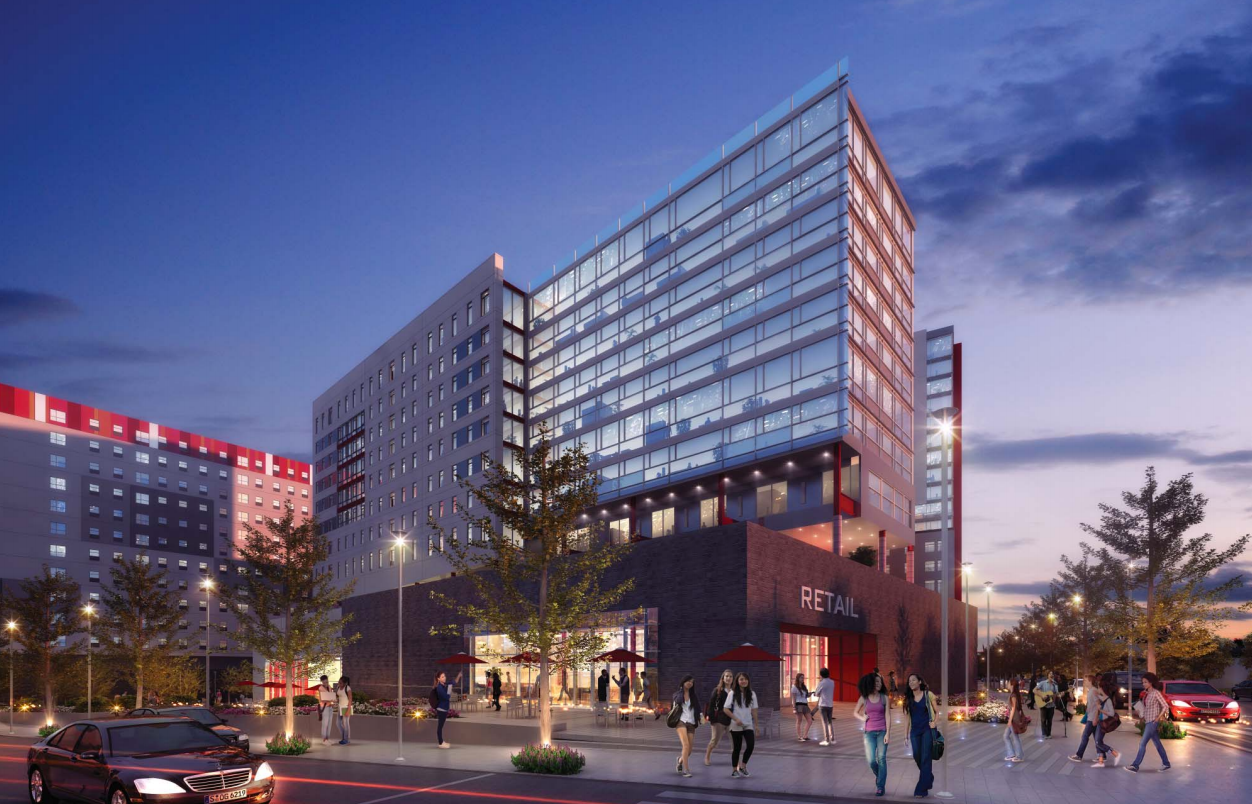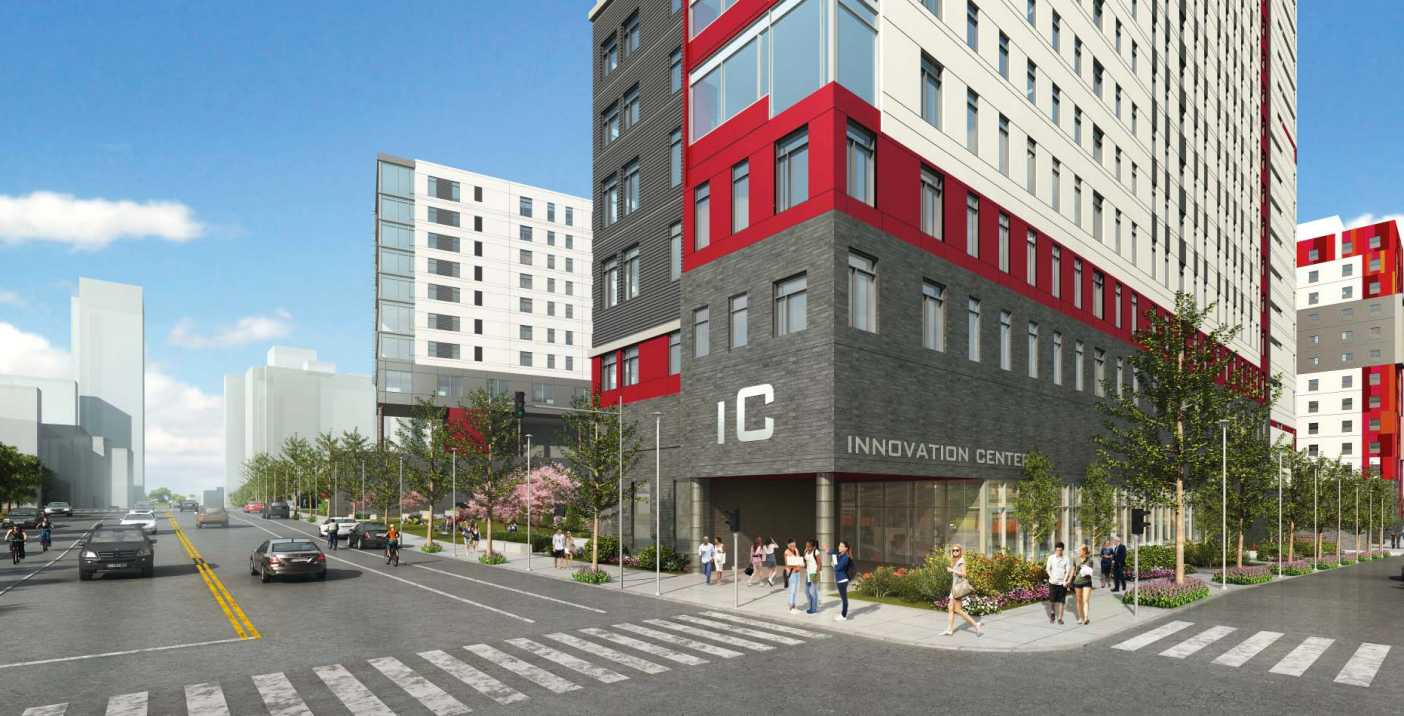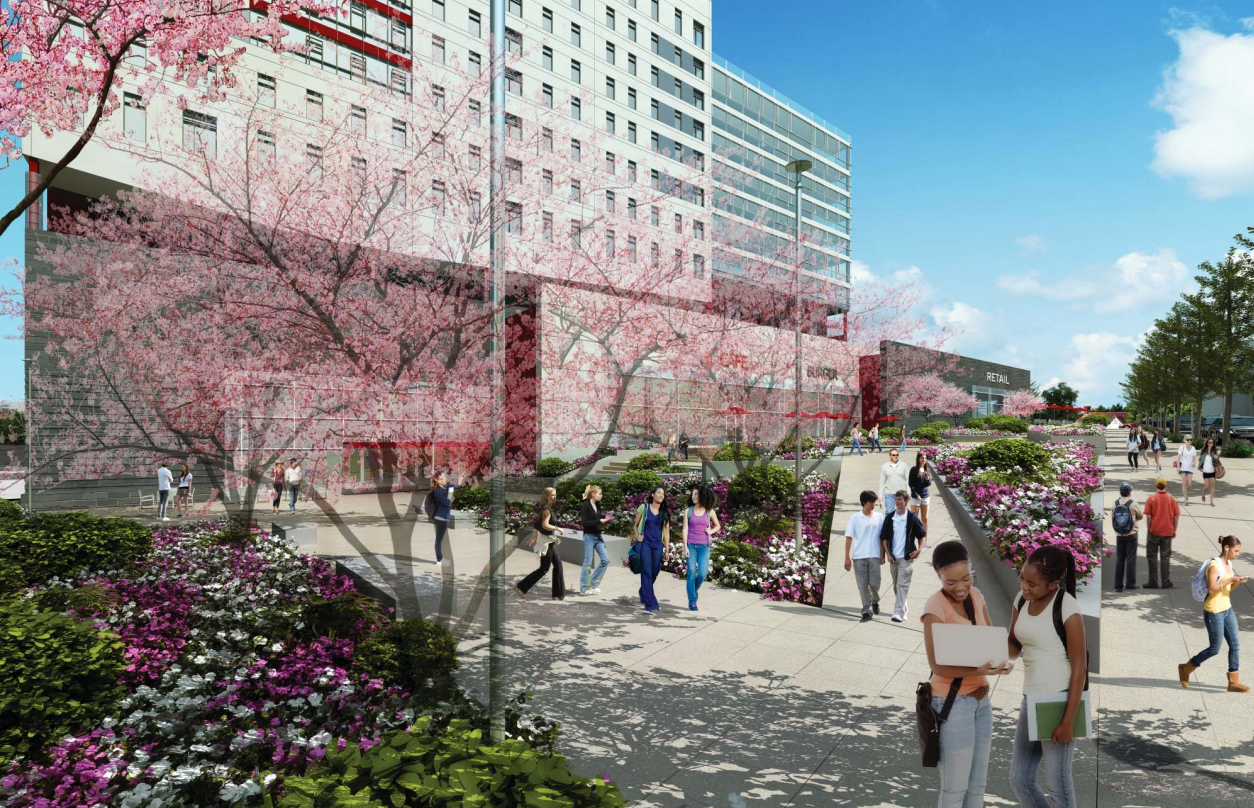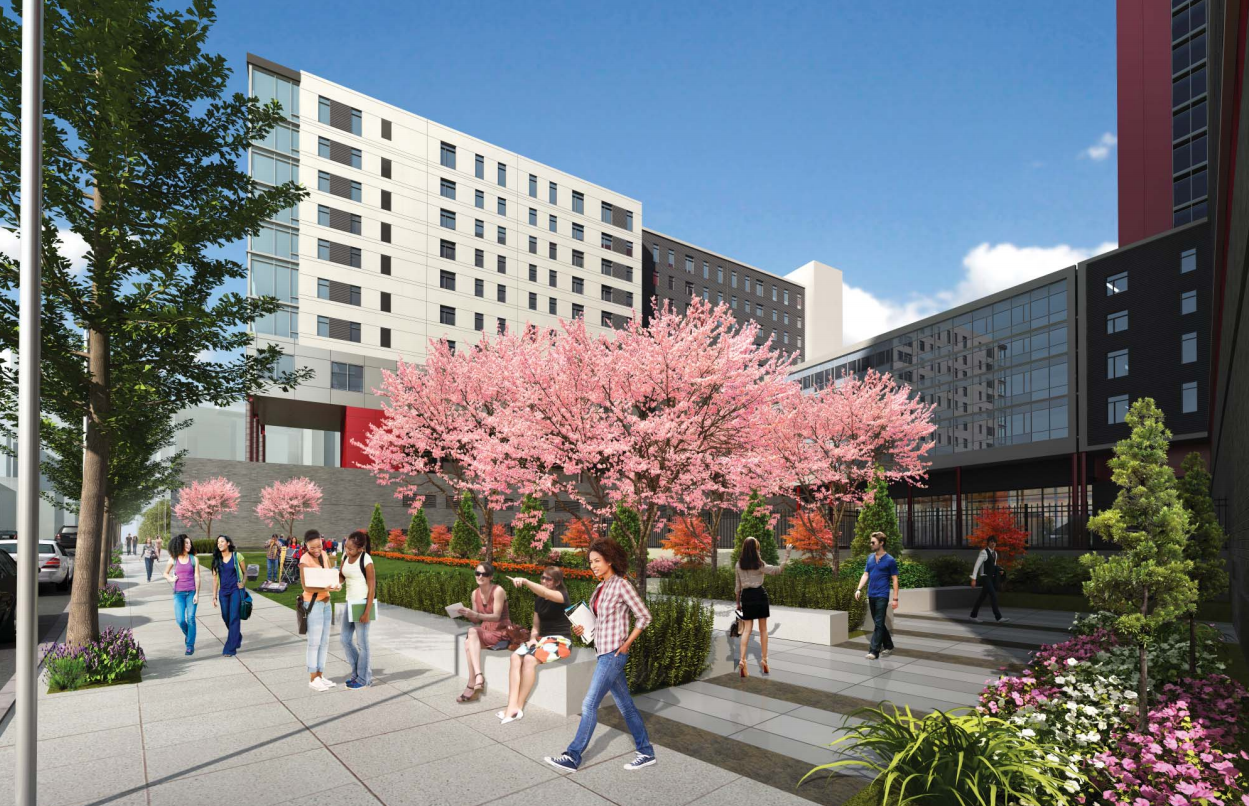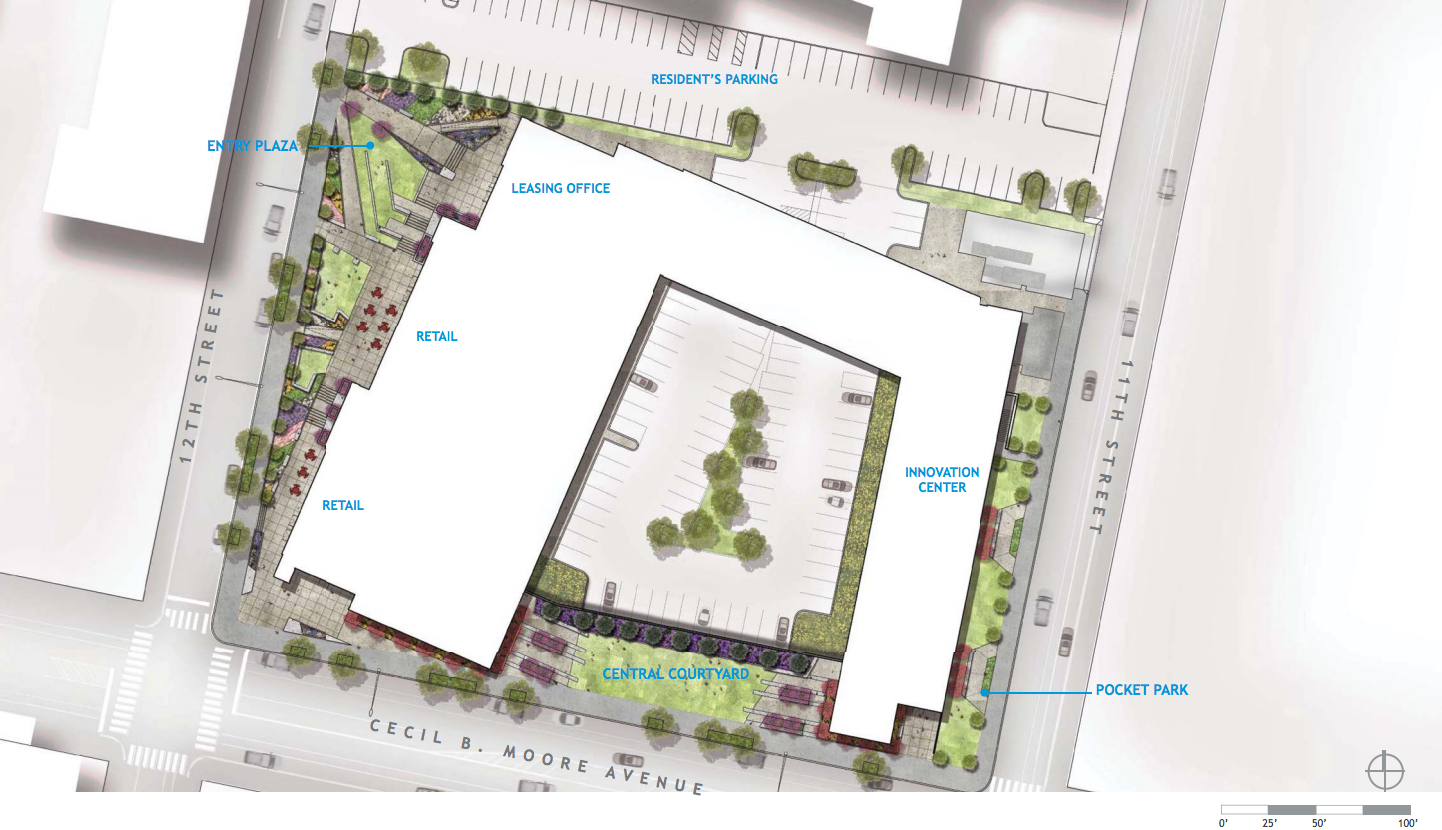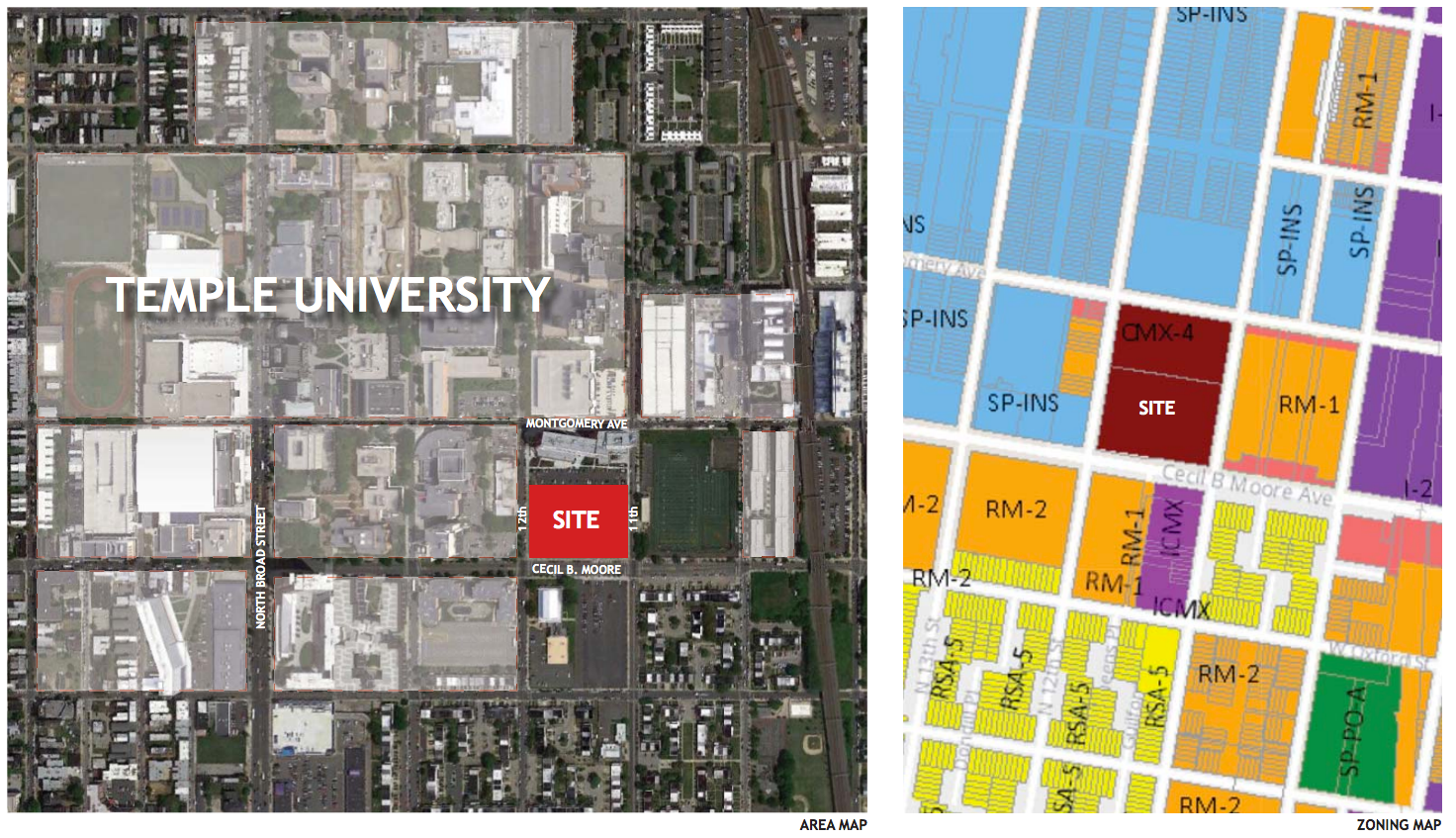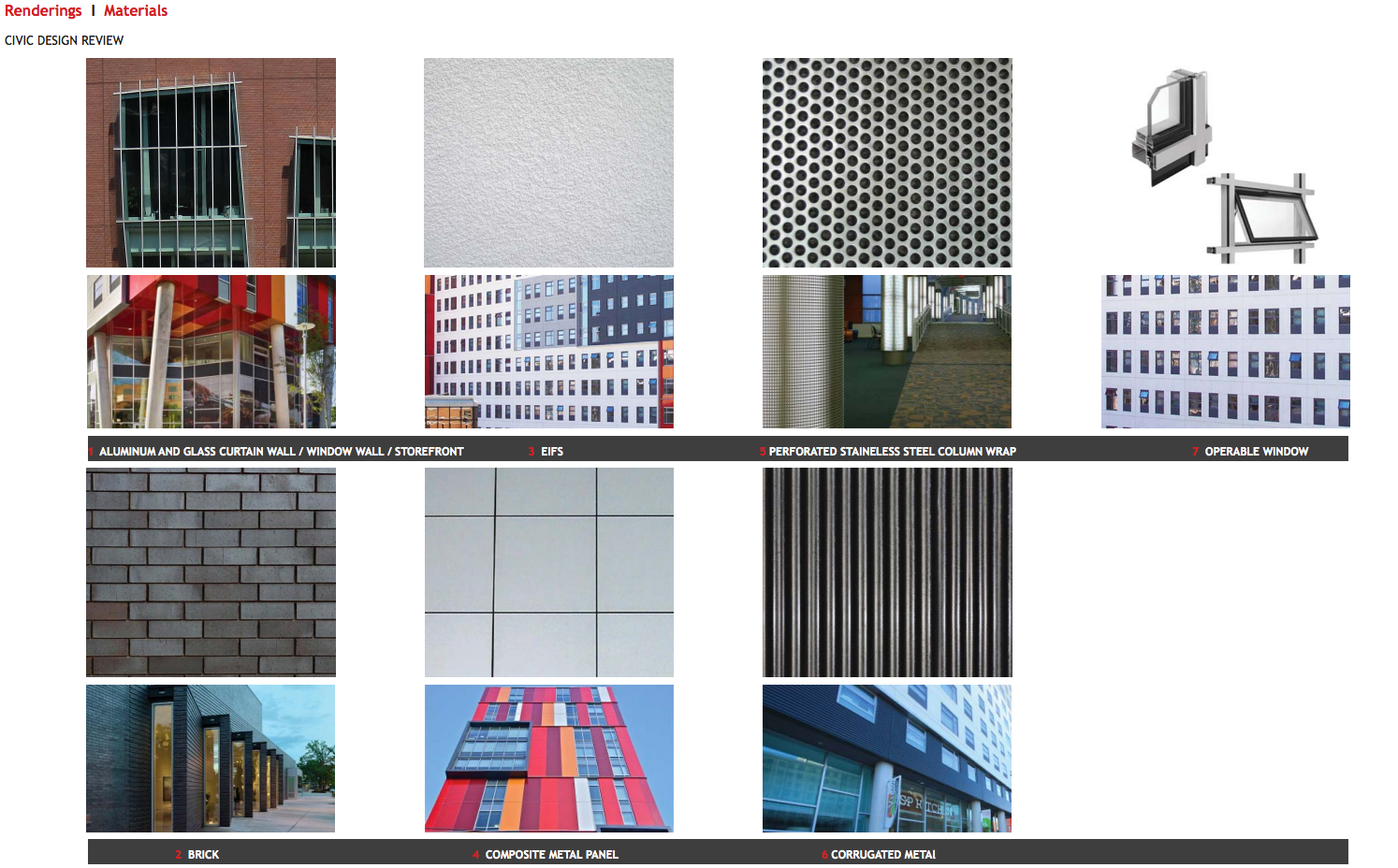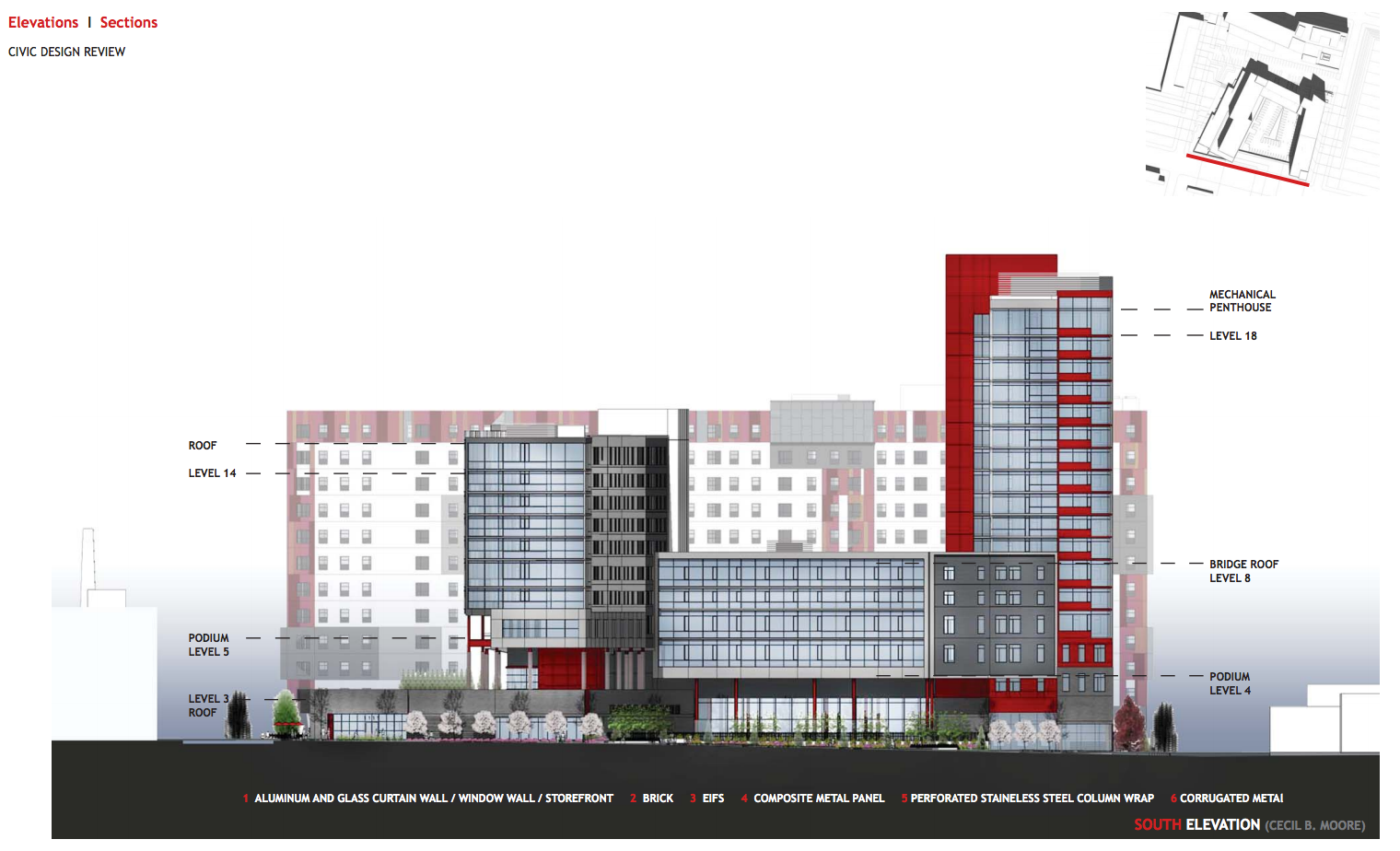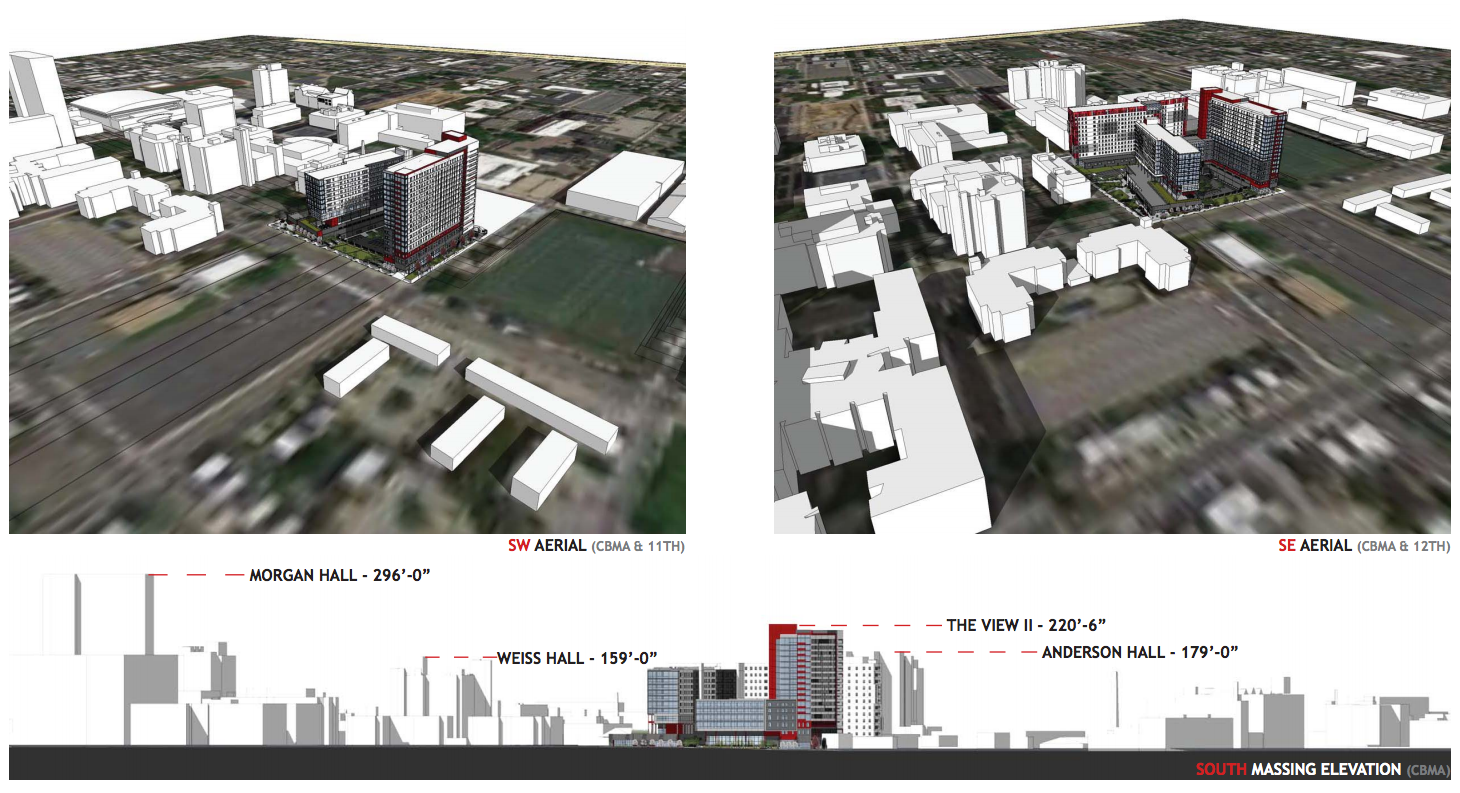Design Review for student housing near Temple focused more on parking than design
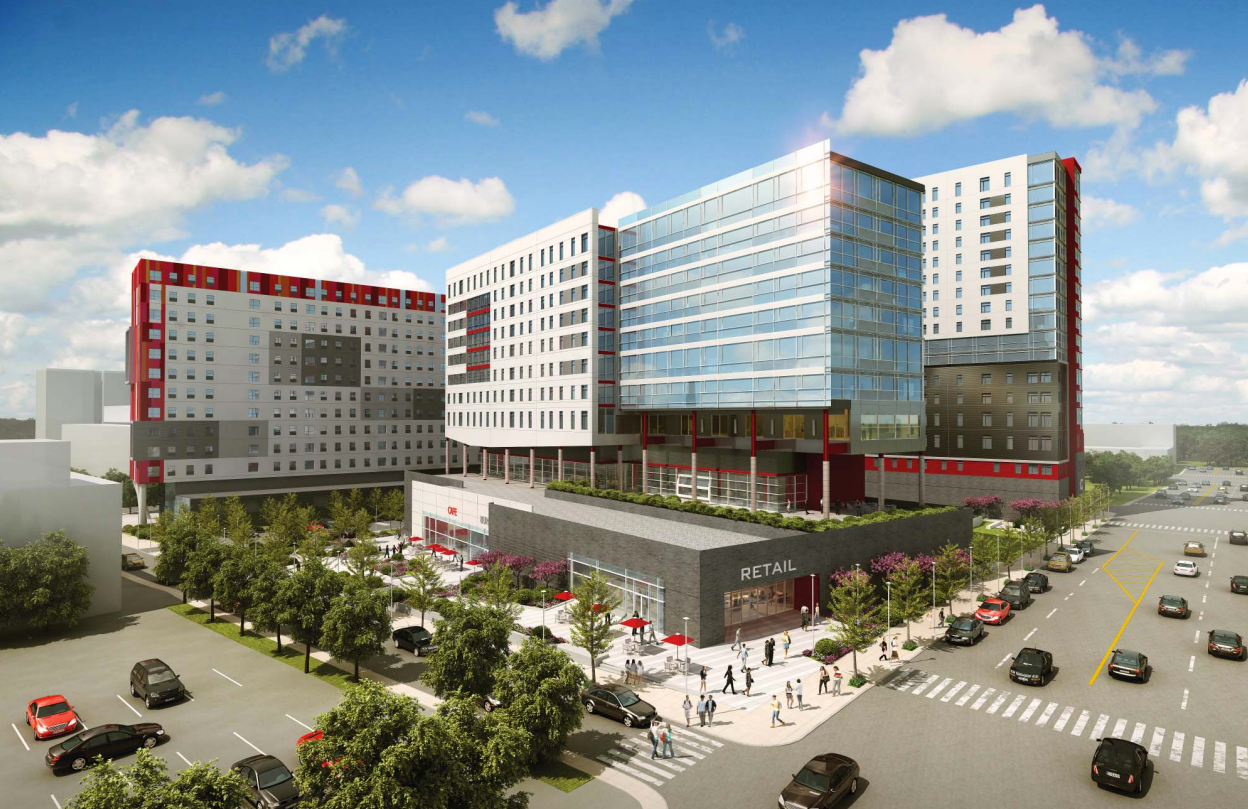
When it comes to new student housing around Temple University, Civic Design Review may as well be Civic Parking Review.
On Tuesday, the Goldenberg Group presented its plans for The View II to the Civic Design Review (CDR) committee. The building is 450,000 square feet, with 352 student apartments—designed to accommodate 874 beds—along with retail, amenities, and an “Innovation Center.”
From the perspective the near-dozen residents who attended the afternoon hearing, that translates into a whole lot more alien cars taking up space on their neighborhood’s streets.
The vacant lot where the View II will be erected upon is zoned CMX-4 and the construction is by right, meaning no zoning variances will be required.
The CDR committee enjoys no binding power, nor is it meant to be used as a forum for concerns about parking in the surrounding neighborhood. Nonetheless that’s what almost everyone who spoke at Tuesday’s meeting expressed concerns about.
Residents of the neighboring Yorktown community see the first View complex, just to the north, as an eyesore. The 14-floor building contains 832 beds and almost 90 parking spots.
“It’s too much, the parking is out of hand already,” said one woman, who refused to provide her name. “You are just adding more cars to the neighborhood. People shovel out their parking spaces but then students park there.”
CDR chair Nancy Rogo Trainer tried to explain that this board could do nothing about the issue—and that, in any case, the building is by right.
“Nothing you do in our community is right,” the woman snapped. “You just do it and we have to suffer the consequences. So don’t talk about right.”
The View II provides 94 parking spots, including six for car-share vehicles, in a sunken area at the interior of the complex. Plentiful bike parking spots are provided as well and the Goldenberg Group liked the Planning Commission’s proposal that more be added on the perimeter.
There are also four bus stops around the site of The View II, including the heavily trafficked Route 23. The Broad Street Line’s Cecil B. Moore stop is a mere two blocks away and the Temple University Regional Rail Station is also nearby.
The number of parking spots in The View II—one for every three units, with bonuses for bike parking and ride share—is allowed under the zoning code that went into effect in 2012.
Community residents fiercely argued that students and university employees were already parking their cars in front of the private residences and congesting the streets of the neighborhood. If nothing changed, and The View II goes up, they feared the community would be crippled.
“We’re just sick and tired of Temple and these developers coming in and taking over our neighborhood,” said Lenore Washington, who intimated that if the developers and CDR members liked The View II so much, they should put it in their own backyards.
The Goldenberg Group’s representatives were unable to provide statistics on how many residents of The View I used private automobiles as their primary means of conveyance, drawing derisive snorts from the audience. Trainer encouraged them to get better data on the subject.
The Goldenberg Group could confirm however, that only half of the View I’s parking spaces are being utilized by residents. It costs $89 a month for residents to secure a parking spot.
Community residents argued that fee pushes the students into the neighborhood, where parking is free.
Jeffrey Young, legislative counsel for Council President Darrell Clarke who represents the area, attended the meeting as well. His office echoed community concerns about parking.
“I do think that being a former student myself, it’s the price of parking that keeps students from using those parking lots,” said Young. “But the price associated with it, most students don’t have it. If you charge $5 a month for parking, the lots would be full and there will be 100 people on the waiting list.”
Young said that the students don’t utilize the public transit, especially the bus system, around the complex.
“I know that there is a view within planning that you are going to discourage parking,” said Young. “But people are still going to have cars….Those developments around public transit are well intentioned, but the expected outcome isn’t happening.”
A few design questions did come up over the course of the nearly two-hour meeting. Community members roundly bashed the red panels on the building, much like those on the original View complex, too.
But parking remained the primary antagonist.
Solutions proposed included establishing a permit-parking zone in Yorktown, to keep students and their guests off of residential streets, or dropping the price of registering to park at the complex as Young suggested.
Architect Cecil Baker, however, offered a more ambitious solution.
“Maybe that 3 [parking spaces] for 10 [units] works on a general community basis,” said Baker, in reference to the zoning code’s provisions for parking within high density zones. “But perhaps that should be reinvestigated for areas around institutions.”
Young, for one, agreed. He said Council President Clarke is supportive of the idea of increasing parking requirements in areas zoned for dense developments.
“But we don’t know if we can get the support of other council members or the community at large,” said Young. “Every time we introduce something in regards to parking we get a lot of flack from certain interest groups throughout the city.”
In the end, the committee voted 4-to-3 to conclude the CDR process on The View II. Trainer explained that she voted to conclude despite the contentious meeting because, she sighed, CDR isn’t the appropriate venue for debating parking policy.
WHYY is your source for fact-based, in-depth journalism and information. As a nonprofit organization, we rely on financial support from readers like you. Please give today.



